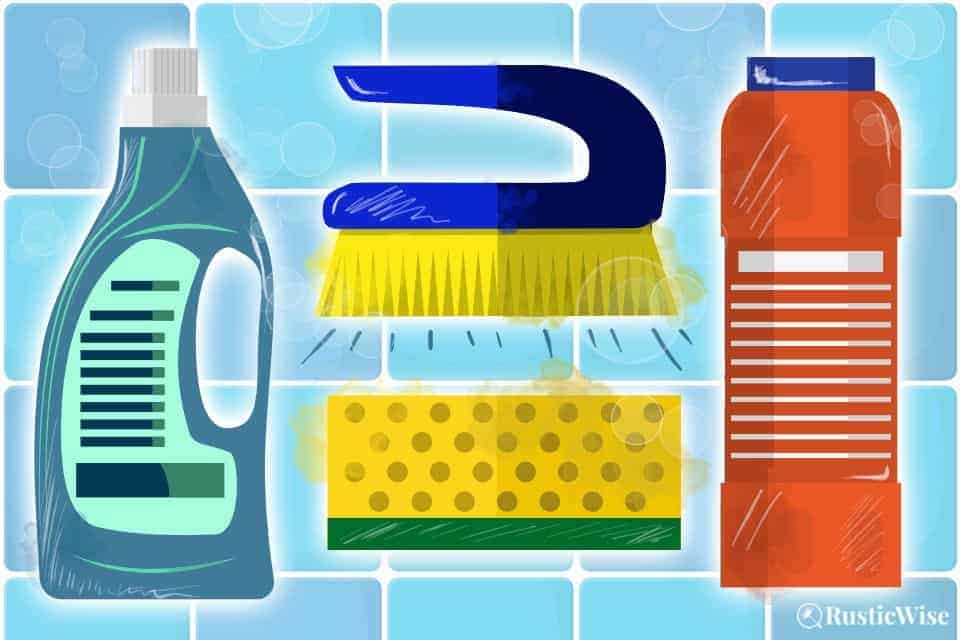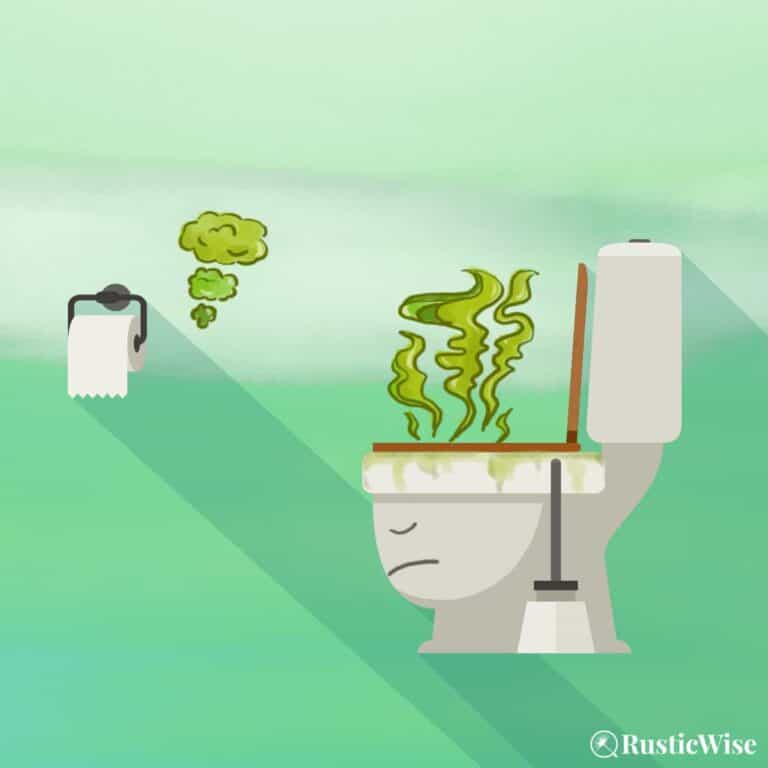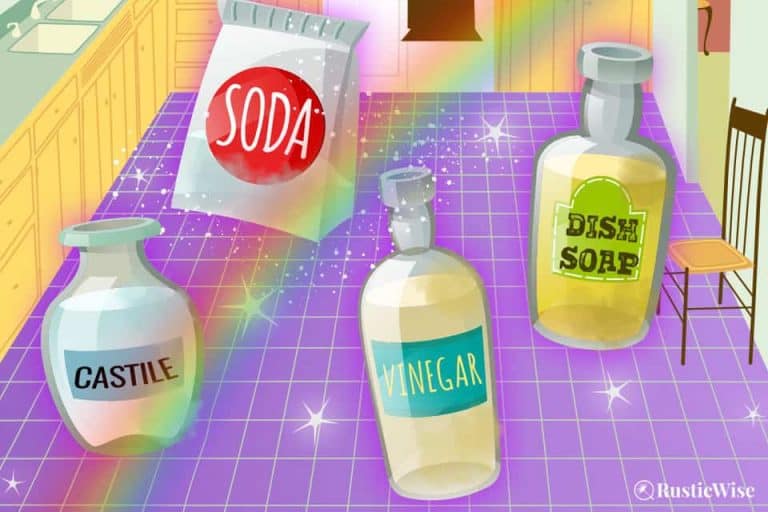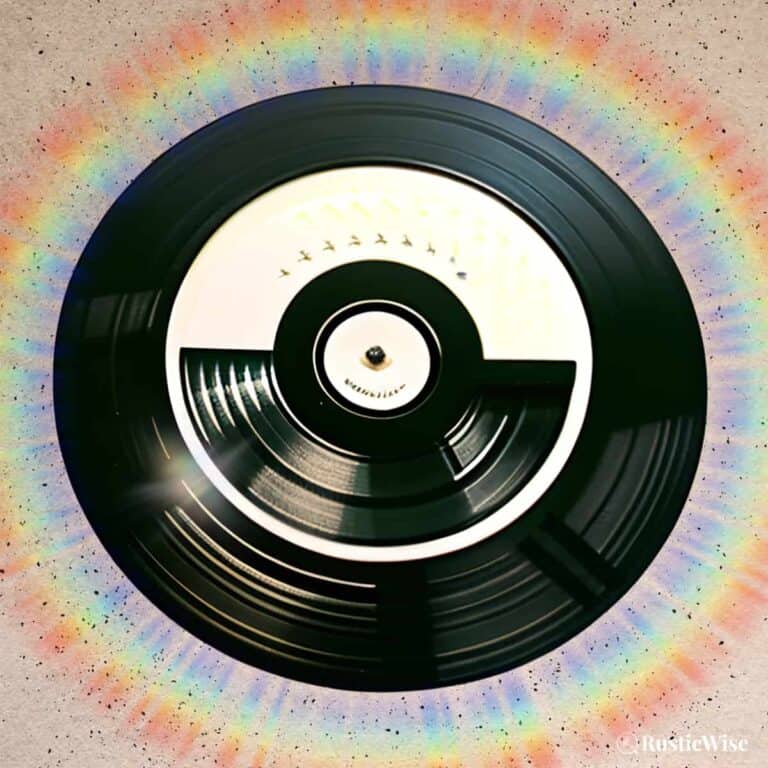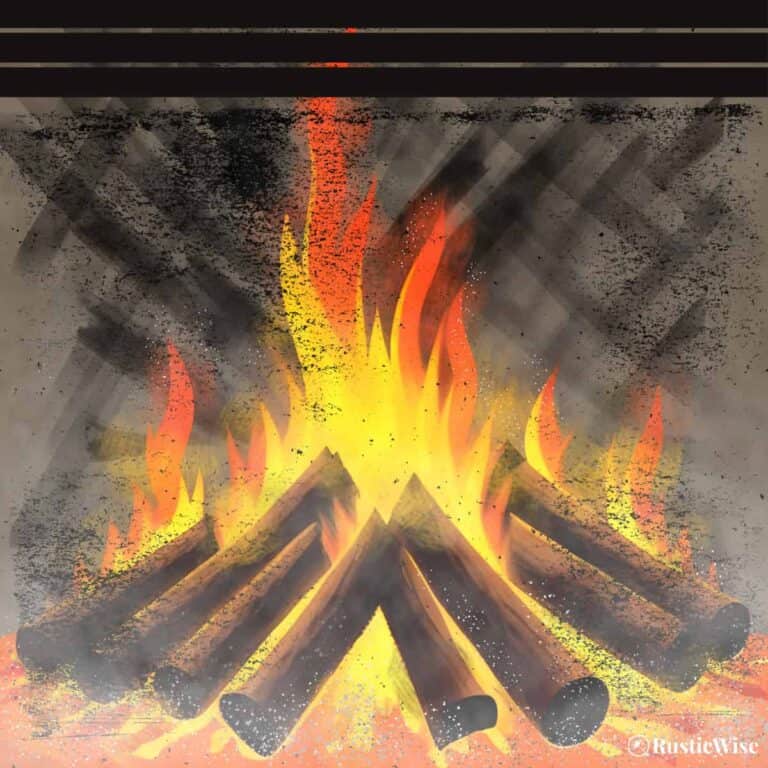What Are Abrasive Cleaners? 3 Main Types and Tips on Using Them
When good old fashioned elbow grease isn’t working to get ride of heavily soiled surfaces, it’s time to break out the abrasives.
What are abrasive cleaners?
Abrasive cleaners are used to remove stubborn grime, grease, rust, or stains that don’t respond well to normal wiping or cleaning. There are 3 main types of abrasives: mineral abrasives (such as baking soda), chemical abrasives (available in liquid or powder), and physical scrubbing tools, such as scouring pads.
These gritty tools help you clean better—with less effort. (And, that’s something we can all get behind!) You should however, use these coarse gritty substances with caution, or risk damaging surfaces.
Let’s take a closer look at different types and examples of abrasive, and how to best use them.
What are abrasive cleaners, exactly? Here are the 3 main types
Abrasive cleaners come in many forms. They all tackle moderate to tough dirt and grime buildup using rough or coarse ingredients or materials to clean effectively. There are three main types of abrasive cleaners:
- Physical abrasive scrubbers: This type of abrasive uses friction combined with a rough surface to remove stubborn stains. Example: steel wool pads, or plastic scrubbers.
- Mineral abrasives: This class of abrasives comprises natural minerals mined from the earth. This includes powders such as baking soda and borax.
- Chemical abrasives: These chemical-based cleaning agents come in both powder and liquid form. Many of these commercial products contain bleach or similar disinfecting ingredients that also help to clean at the same time.
The takeaway: In general, the coarser the particles or material, the stronger (or harsher) the abrasive. Stronger abrasive substances will require less scrubbing. The downside? They may also damage some surfaces. Finer particles are less harsh, but require more scrubbing action.
Now, let’s look more closely at each group.
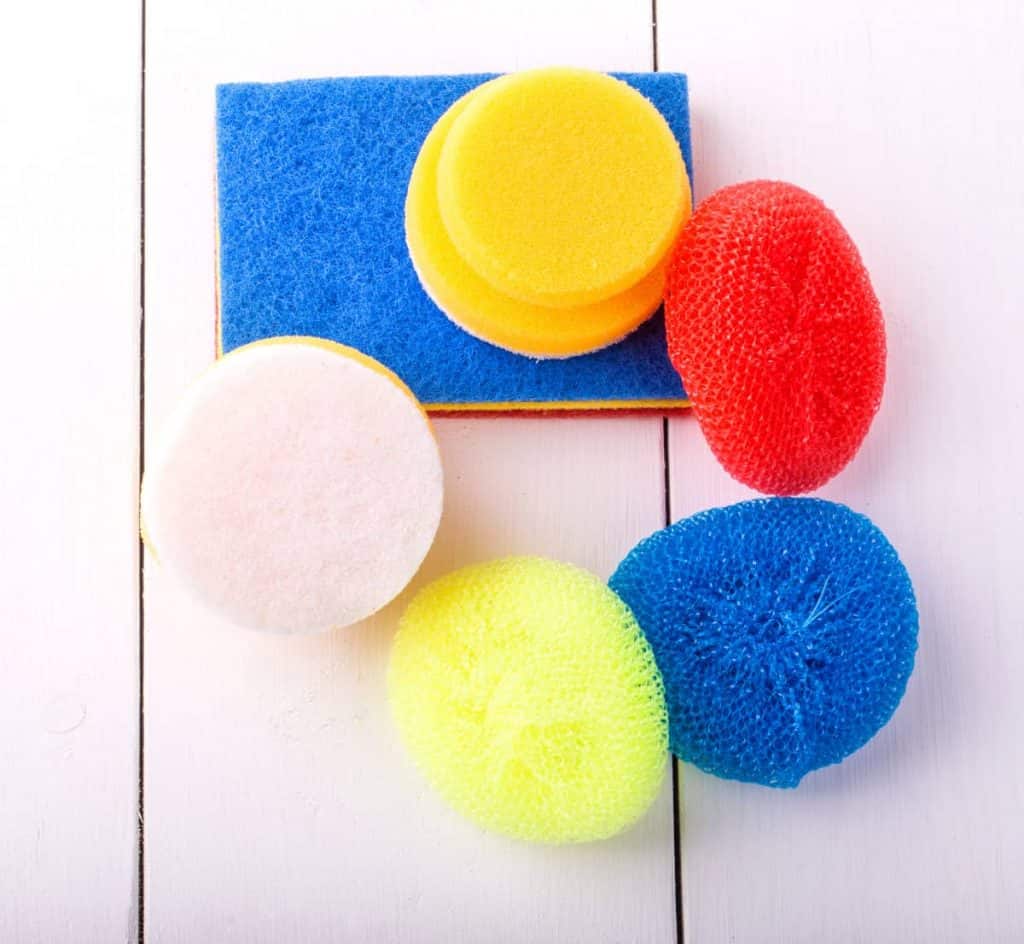
Physical abrasive scrubbers
A step above the average sponge or cleaning cloth, scrubbers provide more grit to remove stubborn stains and hard water deposits. Abrasive cleaning supplies work by boosting surface agitation and physically applying scrubbing power.
Use abrasive scrubbing supplies to rub, chip, or scrape off dirt.
Examples of abrasive cleaners include:
- Plastic scrubbies (the kind that come in all colors of the rainbow)—great for mild cleaning action
- Nylon-coated sponges (mild)
- Steel wool pads that range from fine (for gentler cleaning) to coarse (to remove the toughest stains)
- Steel brushes (for strong cleaning)
Tip: To bump up cleaning power, combine a scrubber with a mineral or chemical-based abrasive.
Mineral abrasives
If you’re looking for more natural cleaning products, consider using mineral-based abrasives before trying chemicals.
Natural abrasives are mined minerals that occur naturally in the earth. They come in varying strengths, ranging from mild (baking soda) to strong (washing soda).¹
- Baking soda (mild): Also known as sodium bicarbonate, this pantry staple has plenty of uses as a mild abrasive and alkali. It has a coarser texture than soil (which helps clean), but is still gentle enough for most surfaces. Sometimes baking soda is called a “scratchless” abrasive. It’s also a great deodorizer!
- Borax (moderate): Sodium borate is an alkaline abrasive that works to remove moderately soiled surfaces. Often used in laundry to lift stains, we can also use borax in DIY dishwater detergents.
- Washing soda (strong): For heavy scrubbing action, use washing soda (aka sodium carbonate, or soda ash). This strong mineral may cause eye and skin irritation—avoid breathing in. Washing soda is sometimes used as a water softening agent.
- Salt: While table salt works in a pinch, for added scrubbing power, try using coarser salts such as sea salt.
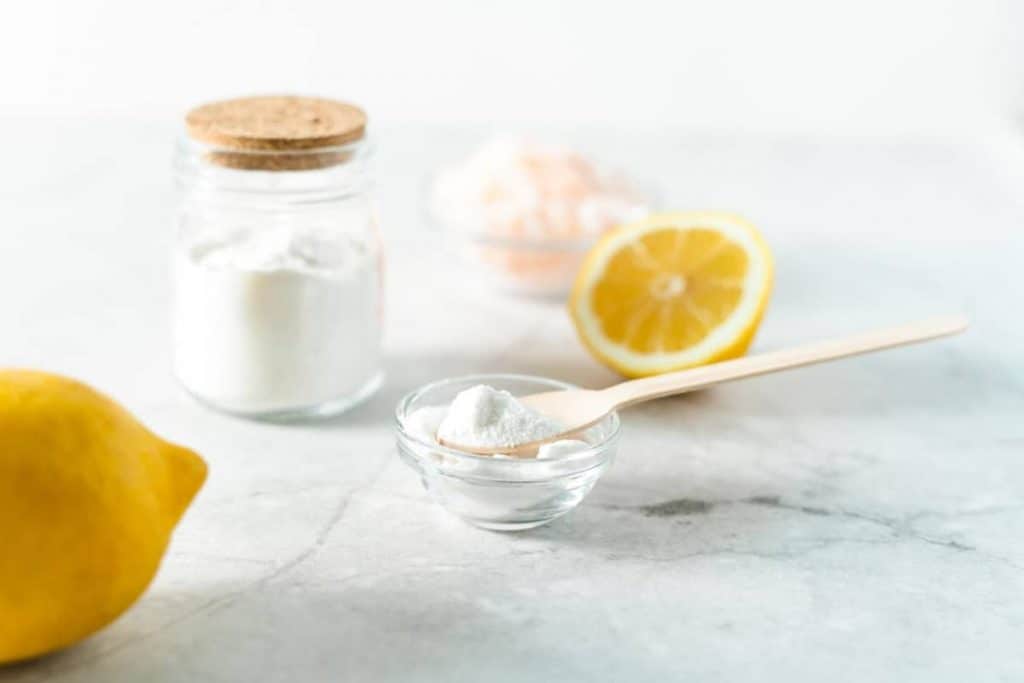
Chemical abrasives
Chemical cleaning products come in both liquid or powder form. They, too, range in strength from mild to strong.
Liquid formulations are generally milder and also contain other ingredients such as surfactants to also clean. Some commercial cleaning abrasives also contain bleach or other antimicrobials to kill germs while cleaning.
Always read the instructions when using strong chemical abrasives, as some may damage surfaces!
Chemical commercial abrasive cleaners contain particles such as ground calcite (calcium carbonate), feldspar, pumice, quartz, or silica (silicon dioxide).
Examples of chemical abrasives include:
- Vim Cream
- Powders such as Comet and Ajax which contain calcium carbonate
- Some multi-purpose cleaners such as Lysol
- Metal cleaners for cleaning stainless steel fixtures

Credit: Vector State
Abrasive cleaners vs. non-abrasive cleaners
What’s the difference between abrasive vs. non-abrasive cleaners? The major difference is non-abrasive cleaners lack the exfoliant ingredients found in abrasives. Non-abrasive cleaners do NOT contain calcite, feldspar, pumice, quartz, or silica.
Instead, many commercial non-abrasive cleaners rely on the use of detergents, surfactants, builders, solvents to provide cleaning power.
Use non-abrasive cleaners on surfaces that are easily damaged such as some stone countertops or glass stovetops. Use a non-abrasive material such as a cotton dishrag, microfiber cloth, or Swedish dishcloth (a cellulose sponge) to clean delicate surfaces.
Some non-abrasive cleaners also contain disinfectants so you can clean and kill harmful bacteria in one step!
Tip: When choosing an abrasive product, look at the ingredients label to look for scouring agents such as calcite, feldspar, pumice, quartz, or silica. You’ll often find products labelled as “cleansers” and not as “abrasives.”
Use caution when using abrasive cleaning agents
Aptly named, this category of cleaners provides some serious scouring action. So it’s no surprise that when used incorrectly, abrasive cleaners can damage some surfaces and finishes.
Avoid the heartache and carefully read and follow the instructions on the package before using (especially for strong chemical scouring agents)!
When should you NOT use abrasive cleaners? On surfaces that are easily scratched.
Avoid using strong abrasives on the following surfaces:
- Some plastic
- Glass
- Nonstick cookware
- Sealed or painted wooden surfaces (such as hardwood flooring)
- Some stone countertops
- Some polished or plated metals
Tip: Use strong abrasive cleaners sparingly (only when needed). With regular use, some cleaners may scratch a smooth surface. Or they can strip, pit, or damage protective coatings or seals on surfaces.
How to use abrasive cleaners
So what are abrasive cleaners good for? Here’s how and when to use them!
Remember that abrasive cleaners come in varying strengths. Tailor your cleaning products and supplies to the severity of the mess. Pairing mild abrasives with minor messes keeps any damage (or headaches) to a minimum!
Tip: Before using on any surface you’re unsure of, do a small test patch to test for any scratching!
Using physical abrasives
Here’s a quick breakdown on when to use each type of scrubbie.
- Mild scrubbers: This includes plastic scrubbies and nylon-coated sponges. Use these cleaners for mild, everyday cleaning of pots and pans, or for removing stuck-on food on dinnerware. Use for light cleaning of microwaves, ovens, and most stovetops. May be safe for cleaning tub and tile in the bathroom if needed (but it’s always best to do a small patch test first!).
- Moderate scrubbers: This includes slightly coarser scrubbers, including fine steel wool pads or pumice stones. Use only when needed on stubborn stuck-on food particles—avoid using on non-stick pans! These may damage some dinnerware sets if used too vigorously or frequently.
- Strong scrubbers: For heavy duty cleaning, you might use strong abrasive tools like coarse steel wool pads, or metal cleaning brushes. Use these for removing burnt-on food bits from the grill or oven racks. These are helpful for exterior surfaces, such as cement. Go easy when using these and use only if needed.
Using natural abrasive minerals
Contrary to popular belief, NOT all natural ingredients are mild. A strong natural abrasive is washing soda, which should be reserved for heavy duty cleaning.
Here’s how to use the following natural scouring agents.²
- Salt: Coarse sea salt is a non-toxic and affordable cleaning ingredient. Use a bit of salt to gently scrub cutting boards. Follow up with a lemon juice wash by gently rubbing a lemon slice (or half a lemon) over the salt to gently remove food particles. Rinse well.
- Baking soda (sodium bicarbonate): A great everyday abrasive that’s gentle for most surfaces. Sprinkle a bit of baking soda onto a damp sponge or directly onto soiled surfaces. Gently rub. Or, make a baking soda paste by applying just enough water in a bowl and mixing. Apply as needed. Rinse well. Safe for most countertops, sinks, tubs, tiles, toilets, showers, and stovetops. Baking soda not only provides gentle scrubbing action, it also deodorizes too and helps to spruce up carpets and stained clothing.
- Borax (sodium borate): A moderately strong abrasive that’s useful for adding to homemade laundry detergents and DIY dishwasher detergents. Borax acts to loosen soils and stains. Its odor-absorbing abilities make it handy for soaking up strong smells, and as a laundry presoak solution. Borax can be used to remove moderate stains in toilet bowls.
- Washing soda (sodium carbonate): A strong abrasive alkali that reduces mineral deposits such as calcium and magnesium in hard water. As a powerful alkali, washing soda works to break down oily or acidic messes. Washing soda is also effective at removing clogs in drains. It’s found in commercial and homemade laundry detergents and dishwasher detergents. Use washing soda to remove the toughest baked on stains on dinnerware (carefully, of course)! Always rinse well after using, and avoid contact with eyes and skin.
Using chemical abrasives
When using chemical cleansers with strong scrubbing power, always wear protective gloves and read the instructions carefully before using.
- Liquid abrasives: Cream or liquid cleansers are (slightly) gentler than their powdered counterparts. They contain microparticles combined with surfactants that can make surfaces look like new again and remove tough stains such as watermarks, or baked on grease. Handy for sprucing up stainless steel kitchen sinks. Apply the liquid cleanser onto a clean, soft cloth, and apply as needed. Let the solution sit for several minutes. Rinse well. Typically safe on most ceramics, stainless steel, and plastics—double-check the label to be sure!
- Powdered cleanser (scouring powders): These types of cleansers come in handy for tough baked on food particles on BBQ grills, oven racks, rust stains, and hard mineral buildup in toilets. Scouring powders can also polish stainless steel sinks. Sprinkle some onto a damp sponge or moistened surface. Let it sit for several minutes before scrubbing. Always rinse well after using. Please read the safety instructions before using. To increase scrubbing action, use a coarse steel wool scrubber (if safe to do so). Some rust removers may contain oxalic acid.
Other types of cleaners
To clean effectively, it helps to be familiar with different types of cleaning ingredients. Besides abrasive cleaning agents, here are several other main types of cleaners:³
- Acids: On the pH scale, acids are considered anything below pH 7. We use acids for cleaning to break down mineral deposits and remove rust, along with removing hard water stains. Mild acids like lemon juice/citric acid, or vinegar are great for day-to-day cleaning. Strong acids like hydrochloric acid are used to remove rust or other heavily stained surfaces.
- Alkalis: Alkaline cleaners are those with a pH above pH 7. These household cleaners are great for cutting through grease, deodorizing, and general cleaning. Examples of alkalis include baking soda, borax, and washing soda. Commercial cleaners such as drain cleaner and bleach are also alkaline. Sodium hydroxide lye is a strong and caustic alkali.
- Disinfectants: Chlorine bleach is a common and effective disinfectant which contains sodium hypochlorite. Disinfectants kill microorganisms. Other antimicrobial products used for household cleaning also fall under this category.
- Surfactants: Surface active agents (commonly called surfactants) are key components of soaps and detergents. Surfactants are effective at banishing oily or greasy molecules and removing food residue. You can find both plant-based or petroleum-based surfactants.
Related questions
Is soap an abrasive cleaner?
No, most soaps are not considered abrasive. Soaps fall under the cleaning category of surfactants as they are great for removing oil and food residues, and other organic matter. Liquid dish soap or Castile soaps are mild soaps that are useful and gentle enough to use on most surfaces.
Is bleach an abrasive cleaner?
Technically, bleach falls under the cleaning category of disinfectants as it contains a diluted concentration of sodium hypochlorite and water, which is effective at killing germs. Bleach is also a powerful stain remover. The sodium hypochlorite content in a bottle of liquid bleach is strong enough to damage some surfaces, which is why people often consider bleach abrasive.
It’s a good idea to dilute bleach with water before using. Never mix bleach with ammonia, or vinegar as it creates toxic fumes!
Is vinegar an abrasive cleaner?
Vinegar is a mild acidic cleaner, and falls under the “acids” cleaning category. Acetic acid in vinegar gives this solution its cleaning abilities. Most bottles of white vinegar contain around 5 percent acetic acid, which helps to cut through grease, descale kettles, and gently disinfect.
Would you like more timeless tips via email?
Fun tips to help you live an independent, self-sustaining lifestyle. Opt-out at any time.


References
- American Cleaning Institute, Ingredient Glossary, https://www.cleaninginstitute.org/understanding-products/ingredients/ingredient-glossary. Accessed May 2022.
- Utah State University, Greener Cleaners, https://extension.usu.edu/archive/greener-cleaners. Accessed May 2022.
- University of Georgia Extension, Cleaning Healthy, Cleaning Green, https://www.fcs.uga.edu/docs/Cleaning_Healthy__Green_HACE-E-73-2.pdf. Accessed May 2022.

Author: Josh Tesolin
Josh is co-founder of RusticWise. When he’s not tinkering in the garden, or fixing something around the house, you can find him working on a vast array of random side projects.

